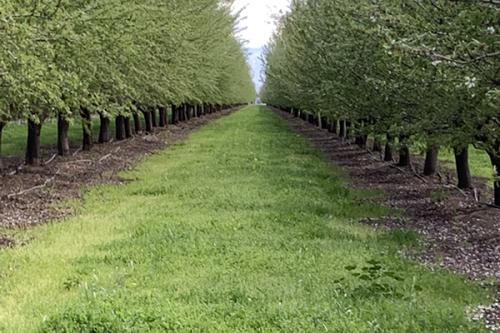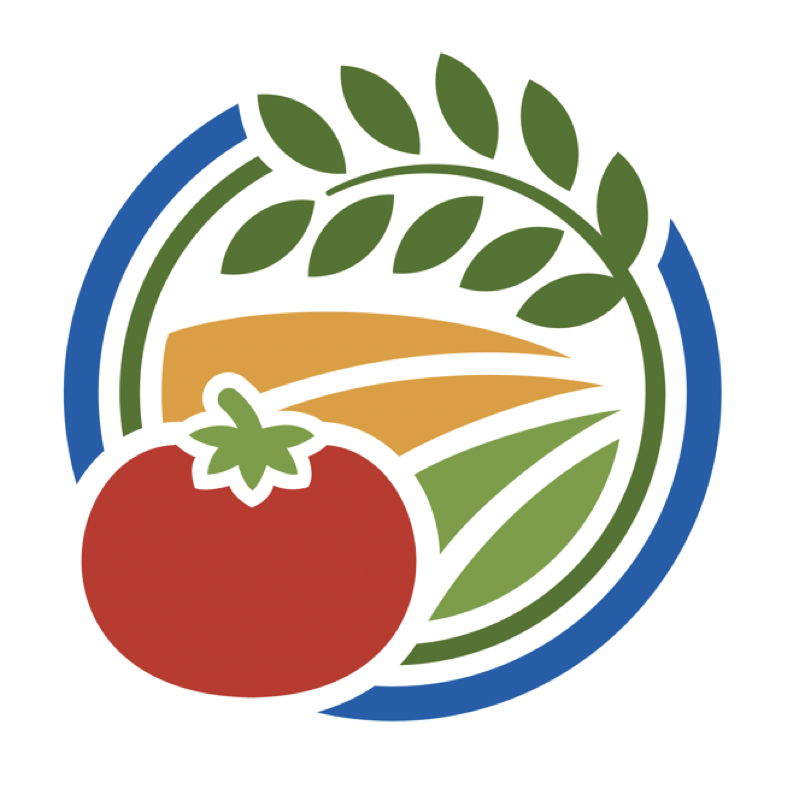
Farm Information
County: Yolo
Location: Woodland
Slope: Flat
Irrigation system: Microjet and drip in the tree lines.
Soil type: n/a
Soil detail: Bare soil when he started in 2014
Special farming challenges: n/a
- Cropping Systems Information
- Crop: almonds
Acres of orchard or vineyard: 156Other crops: no
Acres of other crops: n/a
Organic management: No
Certifications: None
Certifications notes: n/a
Where using cover crops: Almonds - Grower Experience, Farm Priorities, and Cover Cropping Goals
- When started farming (yr): 2014
Farm priorities: n/a
Years growing orchard or vineyard crop: 7 years
Years growing cover crops: 1 years
Initial transition to cover cropping: Did a very small trial through the Project ApisM seed for bees program. Planted in a few rows and immediately saw the benefits and decided to try cover cropping everything for one year.
Goals and benefits: Soil improvement, water infiltration/retention, nitrogen supplement
Benefits description: Reduce compaction and improve water infiltration. Reduce the cracking the soil, which helps with harvest. Fix nitrogen.
Change in goals over time: He doesn't think that one year gives a definitive answer. But it is difficult to predict the weather, and their cover is dependent on rainfall. So doesn't want to spend too much on the seed and planting and then have a light rain year. The risk/reward balance is tough.
Reasons: Stopped the continuation of cover crops due to the dry climate. Cost per pound for almonds is too low and not worth the expense to plant cover crops with uncertain rain. - Cover Crop Details, Planting and Management Methods
-
Block described here: Almonds
Current cover crops: Legumes, grasses
Species and mixes: Annual rye and clovers (innoculated) from TS&L
Planting method: Drill seed
Planting date (2020): November
Was that optimal? Could be earlier if they had any rain/soil moisture. They harvest in August and September, apply hulls and organic material, do the ground work, and then try to time it to rainfall.
Pre-plant soil prep: Implement had multiple functions. Disc, break up, seed, roll. Would have been better with a little rain. Did rototill first in a few areas.
Planting equipment: Grain drill with attachments - 4 operations in one. Required lots of horsepower. Took two passes.
Seeding rate: n/a
Seeding depth: n/a
Did it germinate well? n/a
Additional management and advice: n/a - Cover Crop Termination Methods and Biomass Management
-
Termination method: Mow
Termination equipment and process: Mow to 4 inches, then mowed as low as possible for harvest.
Termination date: June
Was it optimal? Yes, wanted to let the cover crop reseed.
Biomass management: Left in place - Cover Cropping Challenges and Strategies to Address Them
- Challenges: Establishment difficulties, cost
Challenges description: Weather (rain dependent), cost
Strategies to address challenges: Can't really address the weather, nor the prices of almonds which have fluctuated recently. He feels that the risk/reward ratio for rainfed cover crops is tough to justify in dry or drought years.
Was the cover crop worth it? n/a
Least successful past cover crops: n/a
